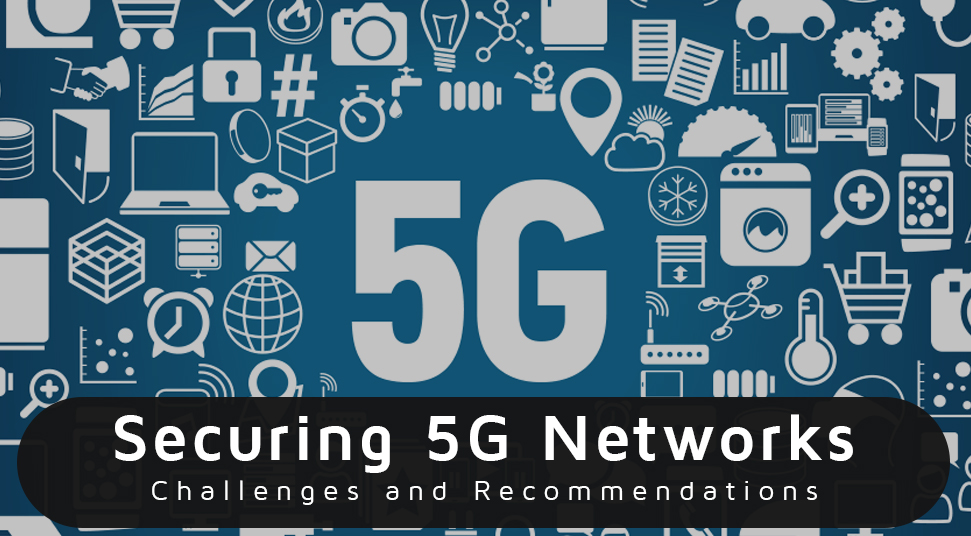With an era of 4G almost fading away, the arrival of the fifth-generation (5G) telecom network has the potential to revolutionize the world. People believe that 5G will have a massive impact on our lives with privileges beginning from smart homes, driverless cars, telemedicine, magnificent 5G internet download speed and advancement in Artificial Intelligence (AI).
But with all the opportunities that is lying in 5G, there is a rise of major secuirty challenges. When it comes to network security, the 3 major planes (control plane for the signaling traffic, management plane carries administrative traffic, user plane manages the actual traffic of payload) each responsible for specified traffic source can be exposed to unique and unknown threats.
By the year 2025, more than 1.1 billion users are going to use this fifth-generation network that accounts for 15 % of all connections around the globe. According to a cybersecurity report from Wipro, concerns for 5G securities is increasing among people. It states that the internet of things(IoT) can be a major entrance to this attack since it will become larger compared to the previous network.
What is the importance of 5G Security?
The 5th generation network will become more complex with its emergence relative to the previous generation of networks. Unlike others, 5g supports 3 major components a) reliable low0latency communication, b) boosted mobile broadband, c) advancement of the device to device communication.
With these functions, the risk of keeping users protected also increases. Machine communicating with machines and high involvement of IoT will increase the need to make 5G more secure and private with time.
Thus, security and privacy protection boards all around the world should consider the importance of 5g securities to establish a strong and healthy mode of communication in the future. They should make solid security protocols, that have to be adapted and amended by giant network companies.
Challenges and Recommendations to secure 5G Networks
5G Cybersecurity Challenge
Supporting a host of advanced functions like smart electric grids, autonomous vehicles, and military interactions, it becomes more difficult to distinguish 5G critical network infrastructure with the standard functions.
A report from 2017 states, that both 3G and 4G were once exposed to “stingray attacks” and other common forms of data hacks.
Individuals and businesses will entirely rely on 5th generation networks, increasing the scope of vulnerability to breach and hack private information and chances of disrupting the connection between 2 devices.
European Union Member States published a joint risk assessment report into 5G technology, that states for increases security risks, we will need to take a new approach to secure telecoms infrastructure.
Huawei is the largest producer of the equipment that are necessary to operate 5G. But the U.S government raises more cybersecurity concerns about Huawei becuase of the rising cybersecurity risk in 5G networks. According to evidence, Huawei’s engineering practices are inferior and could be prone to malicious cyber attacks.
Chances of potential vulnerabilities, entry of malicious programs and cyberthreat will increase with the arrival of 5G devices. That’s the reason, some of the functions in 5G networks are conventionally run in the core and will be performed in the RAN. One potential threat can be the manipulation of equipment in the core network such as interception and redirection of data or elimination of critical systems.
It can take place even after the system have passed a secuirty check, and the manufacturer will send daily updates to the equipment. A threat like that can invalidate front-end security prevention measures like inspecting source code and other vulnerabilities.
All the functions and outputs of the core network will occur in the cloud, which will then rely on artificial intelligence to control and manage the network resource allocation.
5G Networks Security Recommendations
One of the facts is the complexity of secuirty and reliability of 5th generation networks. We are in need of a multi-layered approach that should encompass security measures such as regulatory modifications, technical actions, full diplomacy, cyber-security skills training and most important investments in research and development.
To make 5G more secure and private, the carriers need to combine robust endpoint security protocols to detect and eliminate malware, create stronger pre-tested firewalls and observe DNS activities.
Along with these integrations, it will also need to make a better identity management structure along with smart sandboxing solutions. Experts in cybersecurity recommend the necessity of Cloud Networking in 5G environments.
On the other hand, the Defense Advanced Research Projects Agency (DARPA) puts significant effort to build an open-source hardware movement that obtains the patching of vulnerabilities and protocol authentication for the next generation of chips.
The Federal Communications Commission (FCC) can merge with the Department of Defense to re-allocate more medium-band spectrums.
5G will be used in the automation of cars for commercial use, which increases the risks of a collision on the road if there is poor communication. To encounter this problem, the National Highway Traffic Safety Administration is working on a multi-layered concept of cybersecurity that permits driver assistance technologies.
Smart homes may need advanced methods of authentification such as biometric identification or the fingerprint access door locks to encounter secuirty problems.
Conclusion
Before the arrival of 5th generation networks and starting to use it in our daily lives, we should be aware of how to protect our sensitive and private data. Securing 5G networks may not be rocket science but it is complex. In order to make it global, companies and government security agencies should come together with solid strategy to keep it safe and secure.




